In forestry and carpentry, not all trees are created equal. Some fruit trees stand out for their ability to produce high-quality wood and lumber. These woods, often hidden in the shadows of their fruit-bearing glory, offer unique characteristics that make them valuable in various applications. Here’s a glance at 15 fruit trees that provide these remarkable resources, marrying beauty and functionality.
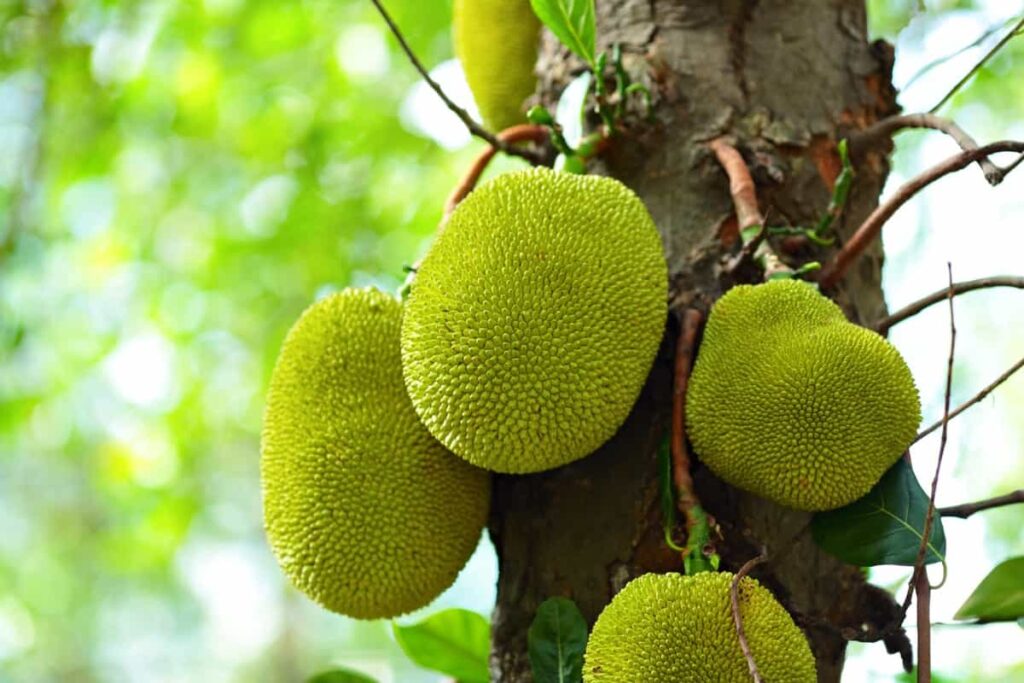
What is Fruitwood?
Fruitwood, including prominent examples in the Philippines like Molave and Jackfruit trees, serves a dual purpose as a source of delicious fruits and high-quality lumber. In carpentry and furniture making, fruitwood is valued for its exceptional characteristics, such as appealing color variations, hardness, and durability.
Molave wood is known for its dark brown appearance and resistance to decay, making it ideal for construction. Jackfruit wood, with its light yellowish-brown color, is suitable for crafting beautiful furniture. These trees enhance culinary offerings and contribute to the world of woodworking by providing valuable materials for various artistic and practical applications.
Lumber and Wood Industry Overview
The lumber and wood industry plays a crucial role in the global economy by providing products for construction, furniture, paper, and more. This involves the sustainable harvesting of trees from carefully managed forests, taking into account the right time and method to minimize ecological damage. Methods like clearcutting, selective cutting, and shelterwood cutting are employed, each with unique benefits and drawbacks.
After harvesting, trees are transported to facilities for processing into lumber and other wood products such as plywood, particleboard, and fiberboard. The stages include debarking, sawing, planing, and drying, all vital for quality production. These products, known for their strength and longevity, are shipped globally and contribute to the paper industry.
Importance of Fruit Trees for the Lumber and Wood Industry
- Increased Yield and Reduced Reliance: These trees grow rapidly, allowing for frequent harvesting and boosting the timber yield per acre. This lessens dependence on old-growth forests, preserving them for future generations.
- Shorter Rotation Periods: The quick growth of these trees leads to shorter rotation periods, meaning the market enjoys a consistent supply of wood, stabilizing both availability and pricing.
- Economic Advantages: Fast-growing trees are more economical to cultivate and harvest, consuming less resources and time than traditional trees. The industry enjoys greater profits with higher yield and shorter rotation, benefitting local and national economies.
- Climate Change Mitigation: As natural carbon sinks, trees store carbon dioxide in their biomass during photosynthesis. Fast-growing trees, having a higher rate of photosynthesis, sequester CO2 at a quicker pace, thus reducing the carbon footprint of the wood industry.
- Deforestation Prevention: By providing an alternative source of wood, fast-growing trees alleviate pressure on old-growth forests, helping conserve fragile ecosystems.
Factors in Selecting Fast-growing Trees for Lumber and Timber
- Quality of Wood: Critical for determining market value. Furniture makers prefer high-quality woods (e.g., black walnut, cherry). Lower-quality woods (e.g., cottonwood, willow) are used for paper pulp or packaging. Must select wood suitable for the intended use.
- Adaptability to the Local Climate and Soil: Native trees usually thrive better. Consideration of the tree’s tolerance to pests and diseases in the area. Healthy and fast-growing trees adapted to local conditions.
- Ease of Cultivation and Maintenance is Crucial for economic growth. Includes factors such as water and nutrient requirements and pruning needs. Pest and disease resistance plays a role in the ease of cultivation.
15 Fruits Trees that Provide High-Quality Wood
Apple Tree (Malus Domestica)
The Apple Tree (Malus domestica), often celebrated for its delicious fruit, contributes significantly to high-quality wood and lumber. Its wood is dense and robust, yet it possesses an easily workable, fine, and even texture. This makes it favored among craftsmen for tool handles, furniture, and specialty wood items.
In case you missed it: The Ultimate Month-by-Month Guide to Custard Apple Orchard Management
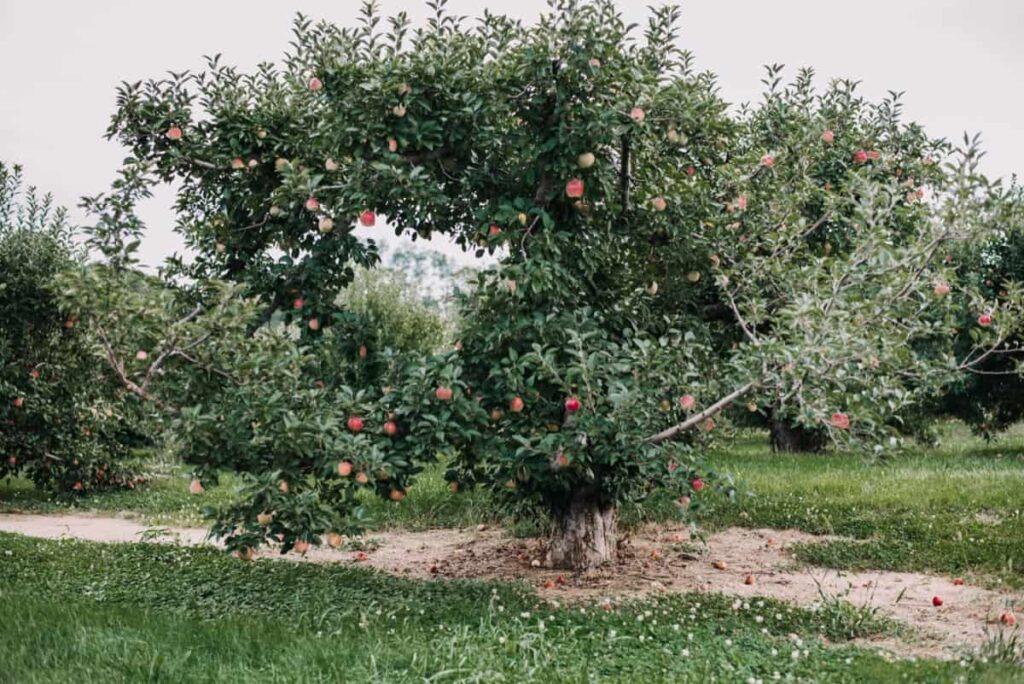
Growing in various climates, the apple tree is not just about its fruit but the hidden virtue of quality lumber. Its adaptability enhances its appeal, though the growth rate may be slower than other lumber trees. Moreover, the wood exhibits an aesthetically pleasing grain, combining functionality with beauty.
Cherry Tree (Prunus avium)
The Cherry Tree (Prunus avium) is special among fruit trees, providing delicious cherries and high-quality wood. Cherished by woodworkers and furniture makers, its wood is renowned for its rich color, smooth texture, and distinctive grain patterns. Cherry wood is widely used in cabinetry, fine furniture, and veneer applications. Its ability to take a fine finish makes it highly desirable in woodworking. Cherry wood is valuable in the market, commanding high prices due to its quality and aesthetic appeal.
Pear Tree (Pyrus communis)
The Pear Tree (Pyrus communis), a valued member of the fruit-bearing family, carries an intriguing duality. The wood from the pear tree is fine-grained, smooth, and strong. It exhibits a unique warmth in color, which often varies from pale pink to reddish-brown. Craftsmen and woodworkers admire this wood for its stability and ease of working. It’s sought after for delicate woodworking applications, including musical instruments, furniture, and intricate carvings.
Despite its luxurious quality, the pear tree is adaptable to various climates, and with proper care, it grows robustly, becoming a reliable source of fruit and fine wood. The pear tree offers a dual benefit, pleasing the palate and the craftsman’s eye. Its wood’s distinct characteristics place it firmly among the top fruit trees providing high-quality lumber,
Walnut Tree (Juglans regia)
The Walnut Tree, specifically Juglans regia, often called the English or Persian walnut, symbolizes distinction in quality lumber. Walnut wood is known for its rich color, fine texture, and durability. It is highly sought after in high-end furniture, cabinetry, and woodworking . Beyond furniture, wood is utilized in veneers and gunstocks. Its market value remains high due to the consistent demand for quality wood.
In case you missed it: Cultivator Vs Aerator: Can a Cultivator Serve as an Aerator

Olive Tree (Olea europaea)
The Olive Tree (Olea europaea) is a fascinating fruit tree renowned for its olives, high-quality wood, and lumber. Olive wood is distinctive with its beautiful grain patterns and rich color. The wood is hard, dense, and highly resistant to decay, making it sought after for fine woodworking, furniture, and ornamental carvings. The cultivation of Olive Trees is not just about olive oil; the wood is valuable in the market. Its applications are diverse, reflecting its quality and beauty.
Molave (Mabolo)
Molave, native to the Philippines, is renowned for its wood’s exceptional quality and hardness. Its reddish-brown color, and distinct grain patterns make it ideal for furniture-making and outdoor applications like decking and boat building. The wood’s strength and shock resistance properties are utilized in tool handles and agricultural implements. Molave is considered one of the finest hardwoods in the Philippines.
Jackfruit (Langka)
Jackfruit wood is valued for its durability and strength, suitable for furniture crafting. Its ability to withstand heavy use and natural resistance to decay and pests make it appealing. The wood’s attractive grain pattern and shades ranging from pale yellow to reddish-brown add to its charm. It’s also an eco-friendly alternative to traditional lumber sources.
Cotton Fruit (Santol)
Santol wood is known for its unique aromatic quality and visual appeal. It’s light to medium brown color and fine texture suit furniture and inside walling. The wood’s delightful aroma adds a pleasant scent to any room where it’s used. Santol wood’s distinct coloration and enticing scent make it an environmentally friendly choice.
Rambutan
Rambutan wood, with its reddish-brown color, is used for furniture, carvings, and small wood projects. Its unique color adds elegance to furniture, and its density allows intricate carvings. Suitable for smaller woodworking projects like jewelry boxes and cutting boards, rambutan’s timber is versatile and visually appealing.
Guava (Bayabas)
Guava wood is known for its light brown color, smooth texture, and fine grain. Its hardness makes it perfect for tool handles and chopping boards. Guava wood’s natural resistance to moisture and bacteria and its excellent workability make it suitable for carving projects and contribute to environmental preservation.
Mango (Mangga)
Mango wood’s light to medium brown color with darker grain streaks makes it attractive. Its medium hardness is ideal for wooden pallets and light construction items. Mango wood’s strength and stability benefit transportation and warehousing industries and its aesthetic appeal allows for various finishes.
In case you missed it: Optimizing Mango Orchard Operations: A Comprehensive Guide for Month-wise Planning
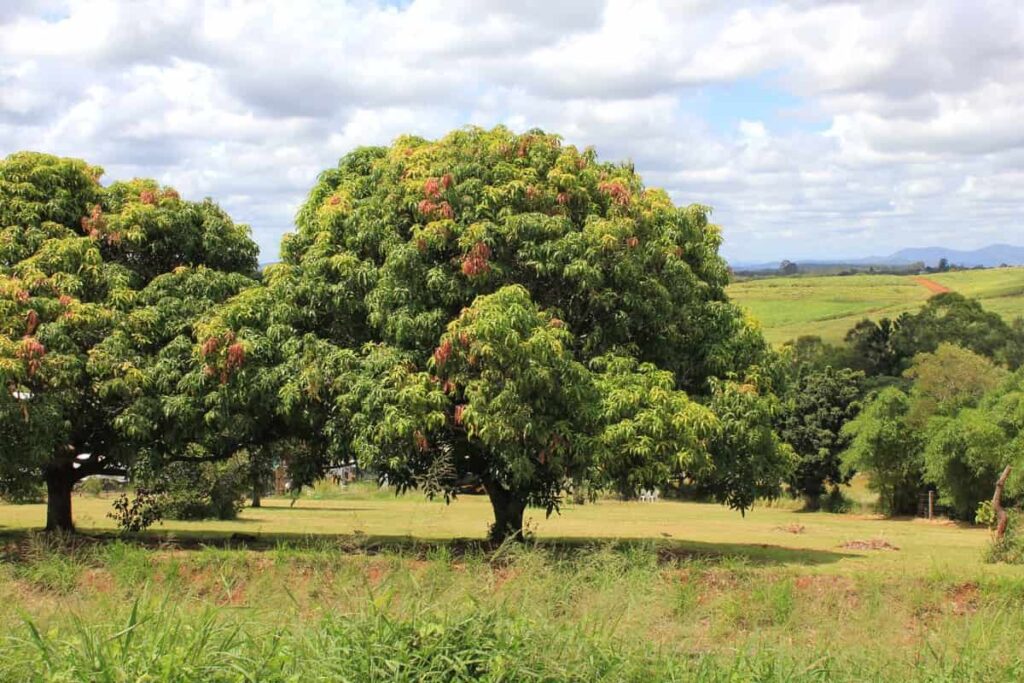
Governor’s Plum (Sirali)
Governor’s Plum wood is known for its hardness, density, and durability. Perfect for tool handles and chopping boards, it’s also used in making traditional spinning tops in the Philippines. Its rich color and unique grain patterns enhance visual interest, making it a prized choice for artisans.
Camachile (Manila Tamarind)
Camachile wood’s distinct reddish-brown color and fine grain pattern make it suitable for furniture and construction. Its hardness ensures durability and resistance to wear and tear. Camachile wood’s wide application in furniture-making and construction purposes makes it a valuable resource.
Durian
Durian wood is known for its durability, strength, and varying color from light yellow to reddish-brown. Suitable for construction, it offers resistance to decay and termite damage. Though less commonly used than other fruitwood varieties, durian wood’s unique characteristics make it an excellent choice for construction projects.
In case you missed it: Durian Fruit Farming in the Philippines: A Profitable Business
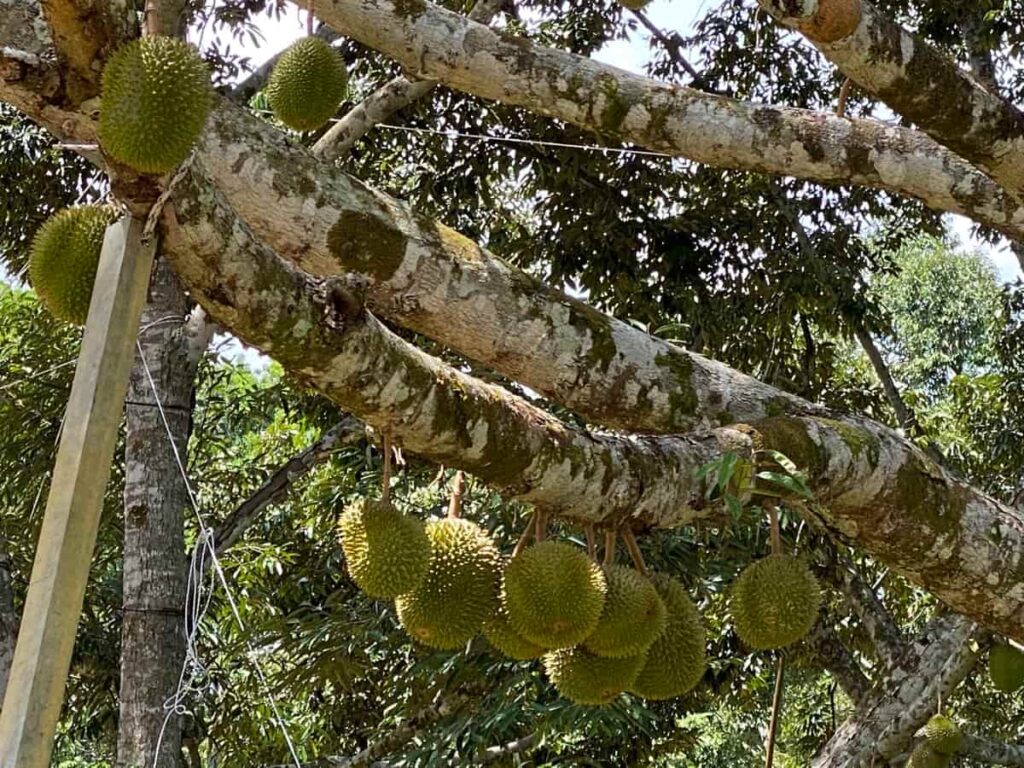
Antipolo (Tipolo)
Antipolo wood is known for its durability, strength, and beautiful appearance. Ideal for light construction projects and outdoor furniture, its natural resistance to decay ensures longevity. The wood’s reddish-brown to dark brown color adds warmth and character. Its availability and benefits, like shade and fresh fruits, make it a sustainable and valuable resource.
Extra Benefits Other Than High-Quality Wood and Lumber
Versatility and Aesthetic Appeal: Fruitwoods like Molave, Jackfruit, and Rambutan are highly prized for their unique colors, grain patterns, and hardness. These characteristics make them suitable for crafting exquisite furniture, intricate carvings, and heavy-duty usage. The visual appeal of these woods adds warmth and elegance to any space, enhancing the overall aesthetic experience.
Durability and Strength: The strength and resistance to decay of woods like Molave, Guava, and Durian make them ideal for outdoor applications and construction projects. Their natural resistance to moisture, bacteria, and pests ensures longevity and reliability. For example, the hardness of Governor’s Plum wood allows it to withstand intense spinning in traditional toys, showcasing its functional versatility.
Eco-friendly Alternatives: Utilizing fruitwood like Jackfruit offers an environmentally friendly alternative to traditional lumber sources. Individuals and industries can contribute to environmental conservation by opting for sustainable resources. Planting trees like Antipolo provides high-quality lumber and offers shade and fresh fruits, creating a win-win situation for both nature and human needs.
Cultural Significance: Some fruitwoods hold cultural significance in various regions. For instance, Governor’s Plum wood is used in making traditional spinning tops in the Philippines. Using local fruitwoods in traditional crafts preserves cultural heritage and promotes local craftsmanship.
Economic Impact: The wide application of fruitwood in furniture-making, construction, and other industries contributes to the economy by creating jobs and local businesses. The availability of trees like Antipolo ensures a sustainable source of lumber, reducing dependence on imported materials.
Sensory Experience: Certain fruitwoods like Santol offer unique sensory experiences. The delightful aroma emitted by Santol wood adds a pleasant scent to any room, enhancing the sensory appeal of the space. This aromatic quality sets it apart from other woods and adds an extra dimension to its use.
Innovation and Creativity: The versatility of fruitwoods allows craftsmen to explore innovative designs and creative applications. Whether it’s carving intricate designs from Rambutan wood or constructing sturdy structures from Durian wood, the possibilities are endless. The ease of working with these woods encourages artistic endeavors and fosters creativity.
Health and Hygiene: Woods like Guava are used to make chopping boards due to their natural resistance to moisture and bacteria. This highlights the health and hygiene aspect of using fruitwood in daily life. Their natural properties ensure safety and cleanliness in food preparation.
Advantages of Fruitwood
- Double-Purpose: Fruitwood provides delicious fruits and high-quality lumber, making it a versatile and valuable resource.
- Fast-Growing: Unlike traditional lumber trees, fruit trees grow relatively quickly, allowing for the harvesting of usable wood in a shorter time frame.
- Easy Propagation: Fruit trees can be easily propagated through saplings or cuttings, ensuring a steady wood supply without depleting natural forests.
- Accessibility: They can be planted anywhere, including backyards or pots for container gardening, making them convenient for homeowners.
- Sustainability: Growing fruitwood doesn’t require large clearings or contribute to deforestation, as they can thrive in smaller urban spaces.
- Economic and Environmental Benefits: The cultivation of fruitwood promotes self-sufficiency, reduces reliance on commercial timber, and supports environmental conservation.
- Aesthetic and Practical Appeal: Fruit trees add beauty to landscapes and provide practical benefits like shade and fresh fruits, enhancing the overall quality of life.
In case you missed it: Top 20 Agricultural Producing Countries in the World
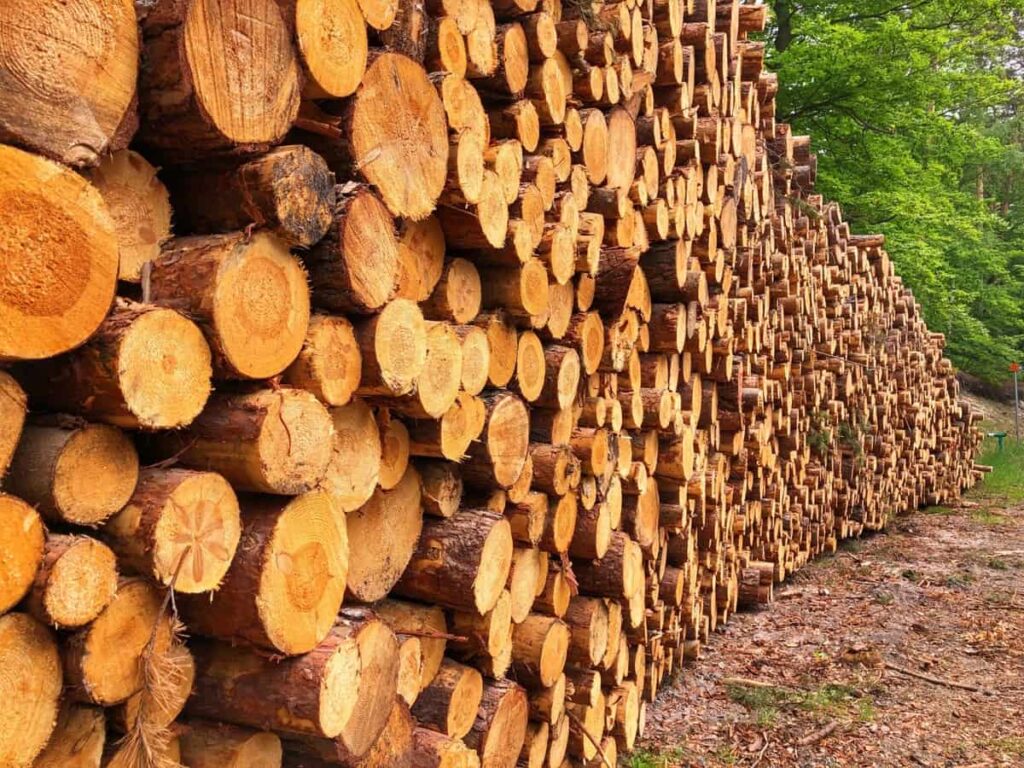
Conclusion
Fruit trees offer a remarkable blend of nourishment and high-quality wood, making them invaluable for culinary and woodworking purposes. Embracing these 15 fruit trees can lead to sustainable living, artistic craftsmanship, and a deeper connection with nature.
- How to Raise Pigs in Your Own Backyard: A Comprehensive Guide
- Budget Friendly Sheep Shed Ideas: Cheap and Low-Cost Tips
- How Much Do Cattle Farmers Make: Revenue Streams in Cattle Farming
- Management Pests and Diseases in Your Cotton Field
- Sheep Farming Business Plan for Beginners
- Aquaponic Farming at Home: A Step-By-Step Guide
- Profitable Village Farming Business Ideas in 2024
- High-Yield Aquaculture: Fast-Growing Fish for Farming
- Effective Fish Pond Construction Techniques for Beginners
- Irrigation and Water Management in Pineapple Farming
- Blossom to Harvest: Mastering Flowering and Pollination in Papaya Farming
- Pig Fattening Essentials: From Selection to Sale for Beginners
- Raising Wagyu Cattle: A Complete Guide for Premium Beef Production
- Soil Types and Their Water Holding Capacity
- Optimizing Irrigation Schedules for Coconut Groves for Enhanced Yield
- Espresso Your Garden: Coffee Grounds for Healthier Acid-Loving Plants
- The Best Soil Mix for Snake Plants: How to Mix Your Own Snake Plant Soil
- Green Thumb Success: Expert Tips for Cultivating Greenhouse Beans All Year Round
- Bloom All Year Round: The Ultimate Guide to Indoor Hyacinth Care
- Eco-Friendly Gardening: How to Make Liquid Fertilizer from Kitchen Waste
- Ultimate Guide to Grow Anise in Pots: Explore Seed Propagation to Harvesting
- Guide to Raising Chester White Pigs: Discover Breed Facts to Growth Management
- Mastering the Elegance: The Ultimate Guide to Weeping Cherry Tree Care, Planting, and Maintenance
- Ultimate Guide to Planting Garlic in Grow Bags: Growing Strategies for Beginners
- How to Fix Spider Plant Leaf-Related Problems: Natural and Organic Remedies
- 10 Reasons Why Your Tulsi Plant is Shedding Leaves: Home Remedies and Solutions
- Optimizing Growth and Yield: The Advantages of Palm Bunch Ash Fertilizer
- Utilizing Neem Oil Extract as a Natural Pesticide for Hydrangea
- From Soil to Harvest: Various Ways in Which Farmers Can Use AI Tools
- Steps to Encourage and Induce Citrus Flowers: A Comprehensive Guide
- How to Fix Snake Plant Leaf-Related Issues: Natural and Organic Remedies
- Transform Your Garden into a Fragrant Oasis with Raat Ki Rani (Night Blooming Jasmine)
- Discover the Ideal Chicken Breeds for Philippine Farms
- How to Create a Poultry Egg Farm Business Plan for Profits
- Grow Lemon Cucumbers Like a Pro: Insider Techniques for Bountiful Yields
- Ultimate Guide to Caring for Your Pink Princess Philodendron: Tips for Thriving Variegation
